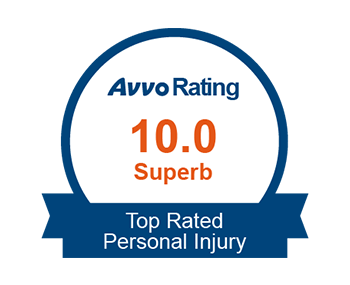It’s not uncommon to feel the pressure of time while driving. However, it’s imperative to understand that speeding is not just a minor infraction — it is a serious threat to road safety. At Andrews, Bernstein & Maranto, PLLC, we recognize the dangers associated with speeding and aim to shed light on why it’s crucial to adhere to speed limits for the safety of all road users.
Why is Speeding Dangerous?
Speeding is a Leading Cause of Accidents
Speeding is a leading contributor to road accidents. According to the National Highway Traffic Safety Administration (NHTSA), speeding played a significant role in approximately one-third of all fatal collisions over the last two decades.
Increased Risk of Losing Control
One of the gravest dangers of speeding is the heightened risk of losing control of your vehicle. When driving at high speeds, your vehicle’s handling capabilities diminish significantly. This impairment in maneuverability substantially increases the likelihood of a collision, putting your life and the lives of others at risk.
Reduced Reaction Time
Speeding compromises your ability to react swiftly to unexpected hazards on the road. At higher speeds, your reaction time window shrinks, leaving you with insufficient time to swerve or brake to avoid a collision.
Increased Risk of Rollover
Speeding exacerbates the risk of a rollover accident, particularly when navigating curves or bends in the road. Driving at excessive speeds generates additional centrifugal force, which can destabilize your vehicle and cause it to overturn. Recognizing this risk underscores the importance of adhering to posted speed limits, especially on winding roads.
Greater Likelihood of Severe Injuries
The laws of physics dictate that higher speeds result in greater kinetic energy, magnifying the force of impact in the event of a collision. Even exceeding the speed limit by a mere 5 mph can significantly elevate the risk of sustaining severe injuries or fatalities in an accident. This sobering reality highlights the paramount importance of driving at safe and legal speeds.
Legal Consequences of Speeding
Aside from the physical dangers, speeding can also have legal ramifications. Getting pulled over for speeding can result in hefty fines and penalties, impacting your finances and driving record. Moreover, in certain circumstances, such as speeding in a school or construction zone, you may face more severe consequences, including the possibility of jail time.
Minimal Time Savings
Contrary to popular belief, speeding rarely yields significant time savings. While some may perceive driving above the speed limit as a means to reach their destination faster, studies indicate that the time saved is minimal. In fact, one recent study found that speeding only saved the average motorist about two minutes per week, hardly justifying the associated risks.
Environmental Impact of Speeding
Beyond the immediate safety concerns, it’s essential to consider the environmental impact of speeding. Driving at high speeds not only consumes more fuel but also generates higher levels of emissions, contributing to air pollution and climate change. By driving within the posted speed limits, motorists can reduce their carbon footprint and promote environmental sustainability.
Psychological Effects of Speeding
Speeding can also have psychological consequences, both for the driver and other road users. Aggressive driving behaviors, such as tailgating and weaving through traffic at high speeds, can induce stress and anxiety in fellow motorists. Additionally, the risk-taking mentality associated with speeding can desensitize individuals to the potential consequences of their actions, leading to a disregard for safety norms.
Importance of Defensive Driving
Practicing defensive driving techniques is paramount for mitigating the risks posed by speeding and other hazardous driving behaviors. Maintaining a safe following distance, anticipating potential hazards, and staying vigilant behind the wheel can help drivers respond effectively to dangerous situations and avoid accidents. By adopting a defensive driving mindset, motorists can protect themselves and others on the road.
Technology’s Role in Speeding Prevention
Advancements in automotive technology offer promising solutions for curbing speeding-related accidents. Features such as adaptive cruise control, lane departure warning systems, and speed limit recognition technology can assist drivers in adhering to safe speeds and avoiding potential collisions. Embracing these innovations can enhance road safety and reduce the prevalence of speeding-related accidents.
Community Education and Awareness
Promoting awareness about the dangers of speeding is crucial for fostering a culture of responsible driving within communities. Educational initiatives, public awareness campaigns, and outreach efforts can help educate motorists about the risks associated with speeding and encourage adherence to speed limits. By engaging the public in dialogue and education, we can collectively work towards creating safer road environments for all.
Frequently Asked Questions
How do speed limits contribute to road safety?
Speed limits are established based on various factors, including road design, traffic patterns, and surrounding infrastructure. By setting maximum speeds for different road types, authorities aim to promote safer driving behaviors and reduce the risk of accidents. Adhering to speed limits allows drivers to maintain better control of their vehicles and react effectively to potential hazards, thereby enhancing overall road safety.
What are the legal consequences of speeding?
The legal consequences of speeding can vary depending on factors such as the severity of the offense, location, and prior driving record. In addition to fines and penalties, individuals caught speeding may face license suspension, points on their driving record, and increased insurance premiums. In cases of excessive speeding or reckless driving, offenders may also face criminal charges and potential incarceration.
The team is very personable, patient and empathetic with their clients. They are upfront with you and will explain the entire process with you, they never lead you to believe otherwise, they tell you like it is and will not sell you a million dollar dream. Trust in Andrews, Bernstein & Maranto, PLLC, they work for you and he looks out for your best interest.” - Jane D.
How can technology help prevent speeding-related accidents?
Technological advancements in vehicle safety systems offer promising solutions for preventing speeding-related accidents. Features such as automatic speed limiters, intelligent speed adaptation, and real-time traffic monitoring can help drivers adhere to safe speeds and avoid dangerous situations. Additionally, smartphone apps and GPS devices can provide drivers with real-time speed limit information and alerts, promoting greater awareness and compliance.
What role does driver behavior play in speeding-related accidents?
Driver behavior plays a significant role in the prevalence of speeding-related accidents. Factors such as impatience, aggression, and disregard for traffic laws can contribute to risky driving behaviors, including speeding. By promoting responsible driving habits, such as patience, attentiveness, and adherence to speed limits, motorists can reduce the likelihood of accidents and protect themselves and others on the road.
How do speeding-related accidents impact insurance premiums?
Speeding-related accidents can have a significant impact on insurance premiums, as insurers assess risk based on driving history and claims history. Drivers involved in accidents caused by speeding may face higher premiums, as insurers perceive them as higher-risk policyholders. Additionally, multiple speeding violations or at-fault accidents can result in further premium increases or even policy cancellation by insurers.
What are some effective strategies for preventing speeding?
Preventing speeding requires a multifaceted approach that addresses both individual behavior and systemic factors. Educational campaigns, enforcement of speed limits, road design improvements, and technological interventions all play a role in promoting safer driving practices. Encouraging motorists to prioritize safety, respect speed limits, and practice defensive driving can help reduce the incidence of speeding-related accidents.
How does speeding impact vulnerable road users, such as pedestrians and cyclists?
Speeding poses a significant threat to vulnerable road users, including pedestrians and cyclists, who are more susceptible to severe injuries in accidents. Higher speeds increase the likelihood of collisions and the severity of resulting injuries, making it essential for drivers to exercise caution and adhere to speed limits, especially in areas with high pedestrian or cyclist traffic.
What are the economic costs associated with speeding-related accidents?
Speeding-related accidents impose substantial economic costs on society, including medical expenses, property damage, lost productivity, and legal fees. Additionally, the long-term consequences of injuries sustained in accidents, such as disability and reduced earning potential, further contribute to the economic burden. By reducing the incidence of speeding-related accidents, society can mitigate these economic costs and allocate resources more efficiently.
Common Mistakes After a Car Accident Who Pays to Fix My Car?Related Videos
How do cultural attitudes towards speeding influence driver behavior?
Cultural attitudes towards speeding can significantly influence driver behavior and perceptions of risk. In cultures where speeding is normalized or glorified, motorists may be more inclined to engage in risky driving behaviors, leading to higher rates of accidents. Addressing cultural attitudes through education, advocacy, and enforcement efforts can help shift norms towards safer driving practices and reduce the prevalence of speeding-related accidents.
What steps can communities take to promote safer driving and reduce speeding?
Communities can take proactive measures to promote safer driving and reduce speeding through a combination of education, enforcement, and infrastructure improvements. Implementing traffic calming measures, such as speed humps and roundabouts, can encourage motorists to slow down and adhere to speed limits. Additionally, community-led initiatives, such as neighborhood watch programs and safe driving campaigns, can raise awareness and foster a culture of responsible driving within local communities.
Verdicts & Settlements
Protecting Our Community
If you or a loved one has been involved in a speeding-related accident, it’s crucial to seek legal guidance and representation from a trusted law firm. At Andrews, Bernstein & Maranto, PLLC, we advocate for victims of car accidents — fighting for the justice they deserve.
Our experienced team understands the complexities of personal injury cases involving speeding and is dedicated to helping clients navigate the legal process with compassion. Whether you’re facing medical expenses, lost wages, or emotional trauma due to a speeding-related accident, we’re here to support you every step of the way.
Don’t wait to pursue the compensation you deserve. Contact Andrews, Bernstein & Maranto, PLLC today for a complimentary case evaluation. Our team is available to discuss your legal options and provide personalized guidance tailored to your unique situation. Let us fight for your rights and help you reclaim control of your future. Contact us now to get started — your journey to justice begins here.














